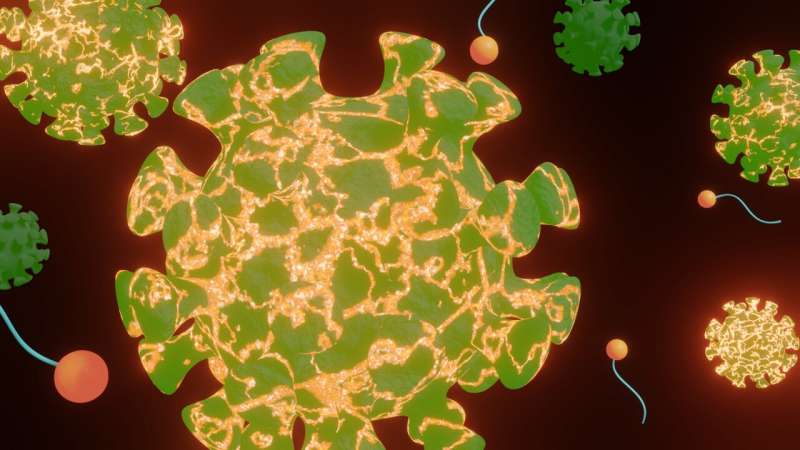This article has been reviewed according to Science X's editorial process and policies. Editors have highlighted the following attributes while ensuring the content's credibility:
fact-checked
peer-reviewed publication
trusted source
proofread
New rapid method for determining virus infectivity

A new method that can rapidly determine whether a virus is infectious or non-infectious could revolutionize the response to future pandemics.
Called FAIRY (Fluorescence Assay for vIRal IntegritY), the assay can screen viruses against virucidal antivirals in minutes, allowing for the effectiveness of antiviral measures, such as disinfectants that break the chain of infection, to be quickly determined.
Dr. Samuel Jones from Birmingham's School of Chemistry led the research team that developed the FAIRY assay. He said, "On average, every four years a new virus is discovered that has pandemic potential, and there are many more already known viruses that could cross the species barrier. Yet to best of our knowledge there is currently no assay capable of identifying whether a sample contains intact or non-intact viruses, and therefore shows whether it is infectious or non-infectious, without cell cultivation that could take weeks."
The current gold standard method for determining viral infectivity uses cultured cells, which takes many days to show results, requires specialist staff to do the testing, and also needs a cultivatable cell line, which is not available for all viruses. The need to use cultured cells also limits current techniques to antivirals that are non-damaging to cells, making the discovery of new disinfectant solutions an additional challenge.
The new method uses a dye that can ordinarily penetrate viruses through pores in the capsid (protein shell) that surrounds its genetic material (DNA or RNA). This dye is conjugated to a larger molecule, which prevents it from penetrating the capsid pores. When the dye binds to viral DNA or RNA it provides a fluorescent signal.
The resulting assay shows whether the virus is intact, and therefore infectious, or not.
The researchers have evaluated the effectiveness of the assay using herpes simplex virus (HSV-2), respiratory syncytial virus (RSV), cytomegalovirus (CMV), human rhinovirus-8 (HRV-8), human coronavirus OC43 (OC43), chikungunya virus (CHIKV), dengue virus 1 and dengue virus 2, Zika virus, and enterovirus 71 (EV71).
These viruses cover the spectrum of enveloped and non-enveloped as well as DNA and RNA viruses, truly showing the potential of the FAIRY assay. Viruses were treated with a wide range of chemicals that have broad-spectrum virucidal activity, including hydrogen peroxide, ethanol, isopropanol and other antivirals, and these tests confirmed that the FAIRY assay has potential for the rapid study of virucides that destroy viral capsids.
Dr. Jones said, "This simple, low-cost, assay uses ready-made consumables, and can rapidly screen multiple disinfectants and viruses, in a single microplate assay, for their ability to neutralize viral infectivity. It could have screened every disinfectant for antiviral activity during the SARS-CoV-2 pandemic and can deliver a more rapid response during the next pandemic."
The FAIRY method is detailed in a paper published in Biomacromolecules.
The FAIRY assay is based on research that was originally started at the University of Manchester. University of Birmingham Enterprise has filed a patent application covering the compounds, their methods and use in determining the viral integrity of virus samples. The company is now seeking commercial partners for licensing or collaboration and expects a high level of interest from companies using virucidal ISO standard testing, testing/screening companies and contract research organizations.
More information: New rapid method for determining virus infectivity, Biomacromolecules (2024). DOI: 10.1021/acs.biomac.4c00358
Journal information: Biomacromolecules
Provided by University of Birmingham




















